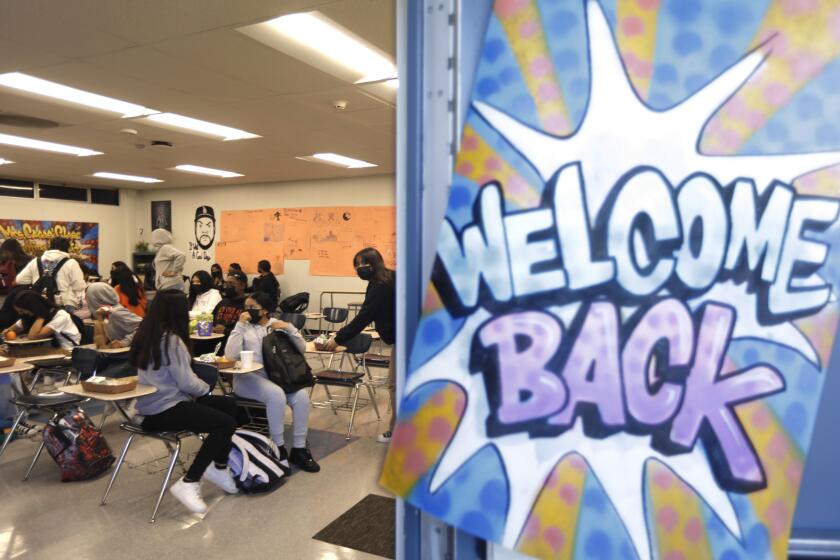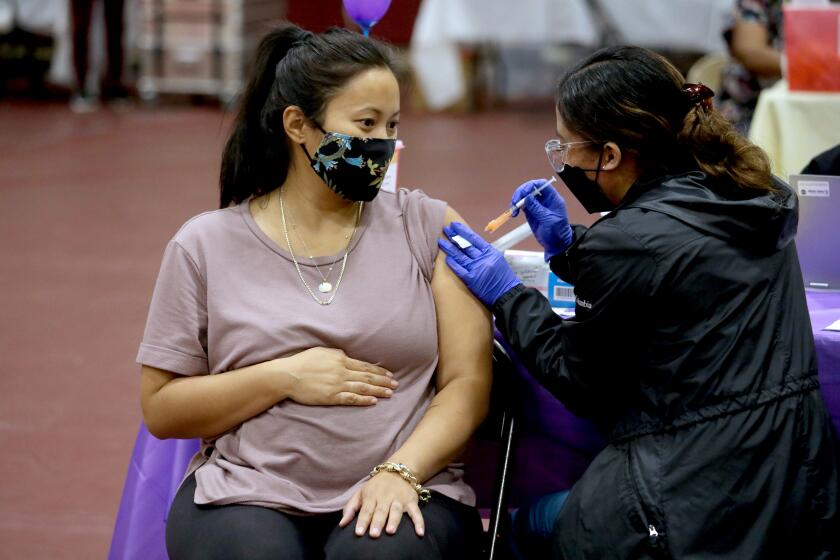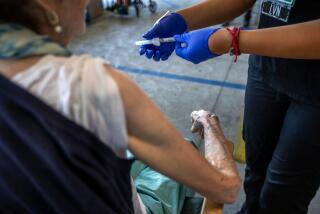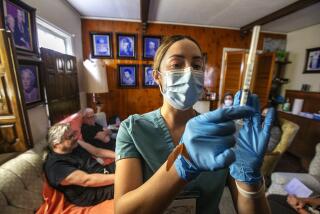70% of Californians have gotten at least one COVID vaccine dose
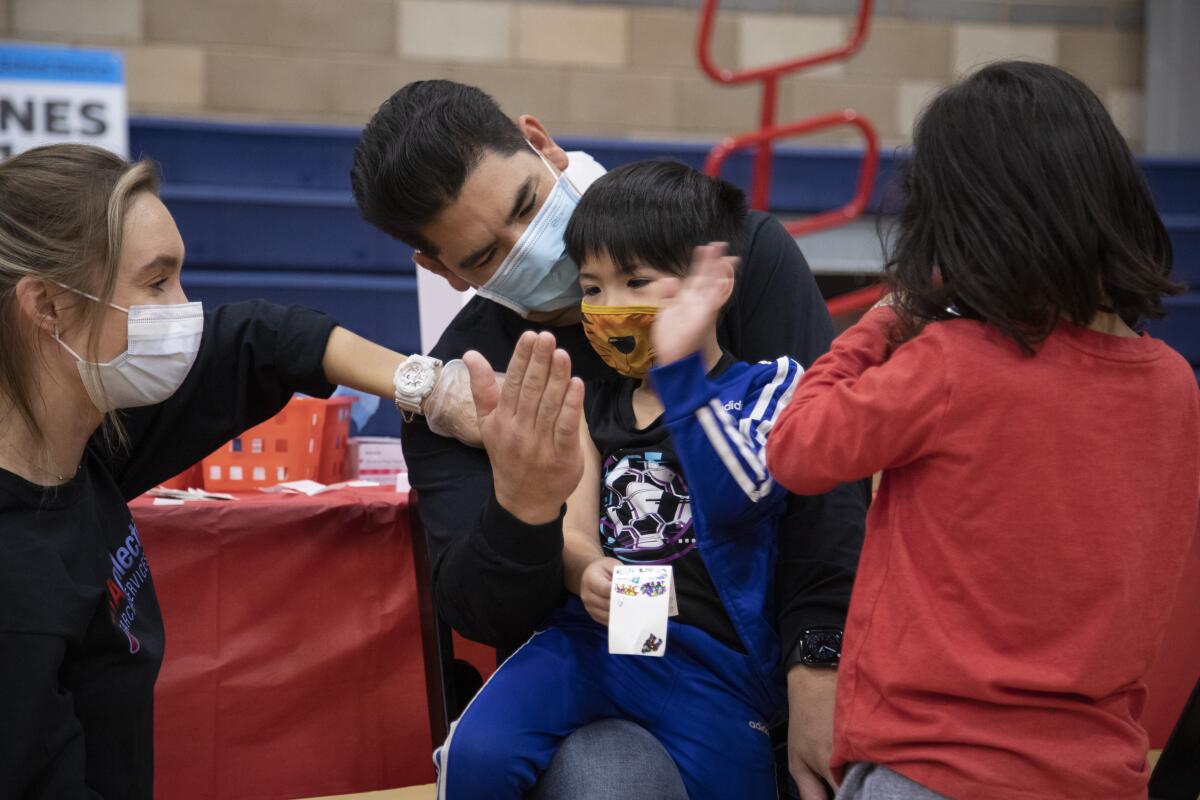
- Share via
Seven out of 10 Californians have now received at least one COVID-19 vaccine dose, a promising milestone that comes as state officials continue to urge more residents to roll up their sleeves for the first, second or even third time to ward off a feared coronavirus resurgence over the winter.
Reaching that level of inoculation coverage — which happened over the weekend, according to data compiled by The Times — has been a long time coming in the nation’s most populous state. California officially cleared the hurdle roughly 11 months after the first vaccine doses went into arms.
The picture is rosier still when looking just at those who can currently get the shots. Closer to 75% of eligible Californians, those ages 5 and up, are now at least partially vaccinated.
About 8% of children ages 5 to 11, who were cleared for vaccination earlier this month, have already received their first dose.
However, there’s still work to do. While 70.2% of all Californians — more than 27 million people — have received at least one shot, only 63.2% have completed their inoculation series.
Though the fully vaccinated side of the ledger includes those who got the single-dose Johnson & Johnson vaccine, most Californians have received either the Pfizer-BioNTech or Moderna vaccine, each of which requires two doses administered weeks apart.
Getting that second shot, experts say, is critical to ensure someone receives the maximum possible protection.
In a state the size of California, even 70% coverage means there are millions of residents who have yet to get even their first vaccine dose. That leaves plenty of people who remain at greater risk of infection and severe health effects from COVID-19.
“The single most important thing that we can do as a community to reduce our risk for another winter surge is to decrease our numbers of unvaccinated people,” Los Angeles County Public Health Director Barbara Ferrer said during a recent briefing.
Health officials are urging the vast majority of adults to get a booster shot as soon as possible.
As has been the case throughout the inoculation campaign, the state is still facing significant geographic gaps — leaving some counties more widely exposed to the threat of coronavirus transmission.
Ten of California’s 58 counties have partially vaccinated more than 75% of their residents, The Times’ data show. In nine others, however, less than half of residents have received at least one shot.
These disparities can have significant consequences. According to figures from the California Department of Public Health, unvaccinated individuals are roughly seven times more likely to get COVID-19, 10 times likelier to be hospitalized and 17 times more likely to die from the disease than those who have been fully vaccinated.
But while officials continue to stress the importance of reaching more unvaccinated people, they’re also devoting more attention than ever to encouraging eligible fully vaccinated individuals to get a booster dose.
“The only exception would be a person who lives in a bubble,” said Public Health Director Barbara Ferrer.
There’s ample evidence at this point that the protection afforded by the vaccines wanes over time. That erosion could be most pronounced for those who received their vaccines during the early days of the rollout, including healthcare workers, residents and staff in long-term care settings and senior citizens.
Boosters, health officials say, help ensure that previously vaccinated people remain well-armored against the coronavirus — adding a pivotal layer of protection heading into the crucial holiday season.
But some of the messaging around who can, or should, get a booster has been muddled, to say the least.
According to guidance issued at the federal level, any adult can get a booster if they are at increased risk of COVID-19 exposure because of where they work or live.
Some health officials, including in California, are increasingly pointing out that eligibility criteria can be interpreted in a more expansive way.
California officials are interpreting that in an expansive way. In a recent letter, Dr. Tomás Aragón, state health officer and director of the California Department of Public Health, instructed vaccination providers to “allow patients to self-determine their risk of exposure” and to “not turn a patient away who is requesting a booster.”
In other words, adult Californians are eligible as long as they’re at least two months removed from their J&J shot, or at least six months have passed since they got their second dose of Pfizer-BioNTech or Moderna.
Already, more than 4.1 million Californians have received a booster dose, state data show.
“These vaccines are lifesaving. These vaccines helped us put a lid on COVID this summer,” Gov. Gavin Newsom said last week. “We’re encouraging people to get their booster shots and, those that have not gotten immunity through a vaccine, we encourage you to consider that as we move into the winter.”
Times staff writer Sean Greene contributed to this report.
More to Read
Sign up for Essential California
The most important California stories and recommendations in your inbox every morning.
You may occasionally receive promotional content from the Los Angeles Times.
